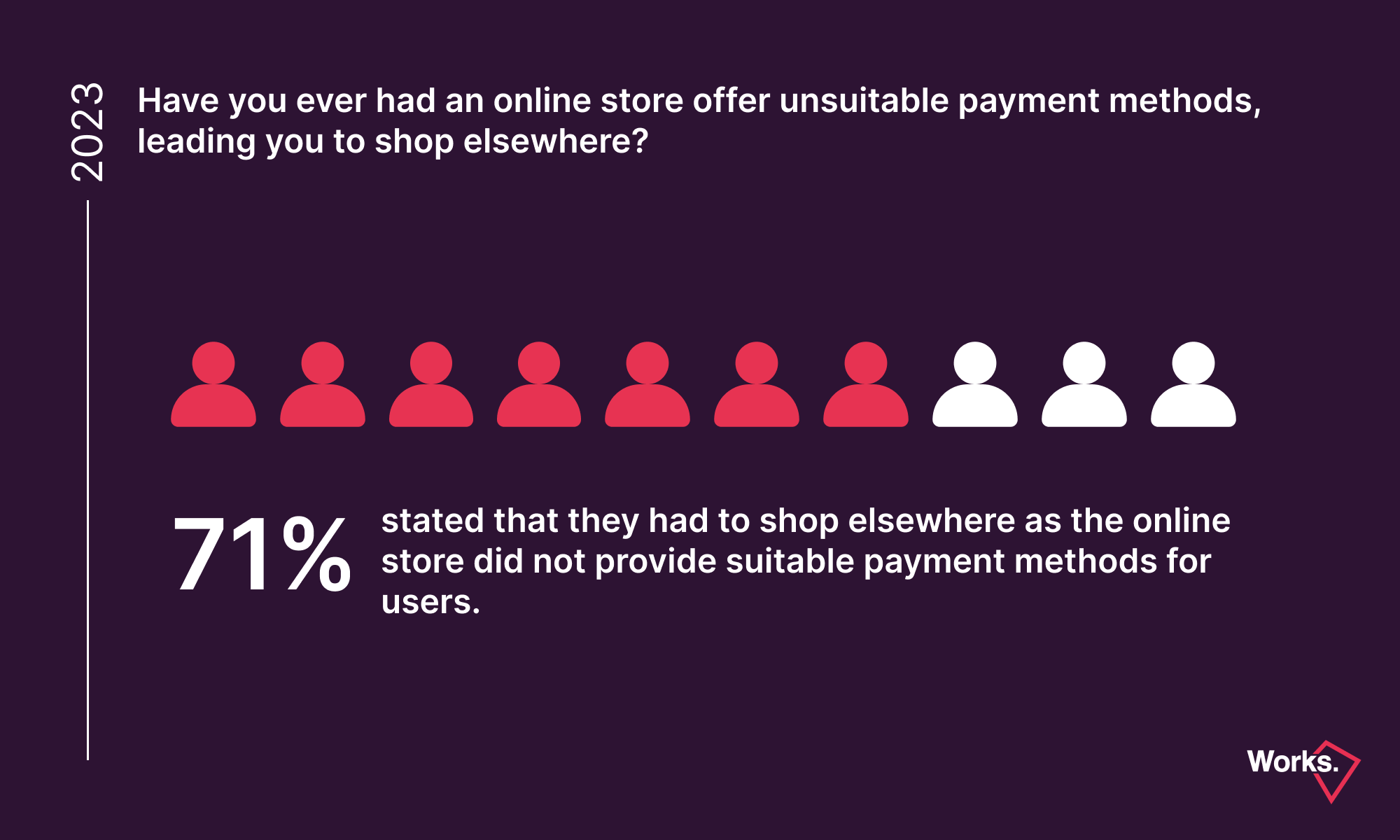How do we pay online?
Online Shopping & Delivery — Part 1
Research of the Hungarian market
In recent years, everyone has experienced how the world of online shopping has changed our lives. The exponential growth of online purchases and the widespread use of online platforms have created new opportunities for businesses, while providing consumers with convenient and fast access to a wide range of products and services.
Based on our research into online order delivery, in this series of articles we will present users' expectations and experiences of online order payment, delivery and communication during the process.
A non-representative online questionnaire, in-depth interviews and desk research preceded this article. In our questionnaire survey, we interviewed participants between the ages of 16 and 75.
Online Shopping & Delivery Series
#1 — How do we pay online?
We introduce the preferred payment methods among customers. We explore the criteria they use to make decisions and their attitude towards the increasingly popular virtual card payments.
#2 — The economic effects of COVID-19
We discuss the economic impact on online shopping. We look at whether the change in shopping habits during the Covid period has continued, and we outline how the growing inflationary environment may influence users' decisions regarding payment and delivery methods.
In this article, we take a look at customer feedback on different delivery methods and preferences. We also discuss how the choice of delivery method by product category influences customers, as well as what they think about environmentally friendly delivery methods.
From the moment of ordering, the status of the ordered products and communication related to pickup are crucial. In this article, we have focused on which messages and notifications are considered important by customers.
In this article, we discuss customers' perceptions of the safety of online shopping, what items they return, and their fears and expectations of shopping on international websites.
What payment methods are available to users?
In the early 2010s, cash on delivery and bank transfer were the typical payment methods for online shopping. However, by the end of the decade, the availability of card payments for online orders increased rapidly with the emergence of online payment providers such as Barion or Simple. This was followed by the emergence of contactless payment providers such as Apple Pay, Google Pay or Paypal, which allowed us to make payments without using cash or a physical bank card. As a result, we can now choose from a variety of payment methods when placing online orders, including cash on delivery, prepayment, online card payments or payment options offered by electronic wallets.
According to the Hungarian National Bank's Payment System Report, the number of internet-based merchants accepting electronic payments increased by 24% last year, giving us access to 42,000 acceptance points for our online orders. In addition, electronic wallets also saw significant growth, with the number of cards registered in mobile wallets reaching 1.7 million, representing almost 18% of all bank cards registered in such services. (source 1)
How do people prefer to pay for online purchases?
The choice of payment method for online orders is often determined by individual preferences and age differences. If there is trust in the merchant's website, online card payment comes out on top. The availability of well-known payment systems on the merchant's site, such as Barion or Simple Pay, can further increase confidence. This method is fast and convenient, allowing customers to make purchases online easily and securely. Another advantage is that with online card purchases, there is no need to deal with payment on delivery, as anyone can receive the package.
1. chart: Frequency of Payment Method Choices
Regardless of age group, the majority of respondents pay for their orders when they place them. While 69% of respondents use a card to pay online, cash on delivery still plays an important role. Bank transfer is the least preferred payment method. This may be because modern payment methods have replaced the need for bank transfers and people are choosing the easier and faster online card payment over the outdated bank transfer. However, the preferred payment methods vary between different age groups.
2. chart: Distribution of Payment Methods by Age Group
In the 15-25 age group, contactless payment is more popular than in other age groups, driven by technological advances and the widespread use of smartphones among young people. This generation is turning to digital payment solutions mainly because of the simplicity, speed and convenience they offer.
In the 26-35 age group, online card payments remain dominant and cash on delivery also plays an important role among payment methods. The use of electronic wallets is somewhat popular, reflecting the convenience preferences and positive attitude towards technological developments in this age group.
For the 36-45 age group, online card payment remains the most common choice, with cash on delivery also important. The use of electronic wallets is noteworthy, but in smaller proportions compared to younger age groups.
In the 46+ age group, cash on delivery is a more popular payment method than in other age groups. For this generation, security and convenience are more important and they prefer to pay when the product is delivered.
Offering a wide range of payment methods can be a significant cost for online retailers. On the other hand, customers are more likely to choose another merchant if the payment method offered does not meet their preferences. (source 2)
3. chart : Insufficient Payment Methods Offered by Online Stores
71% of respondents have experienced a situation where an online store did not offer the payment method they were looking for, forcing them to shop elsewhere because their expectations were not met.
From this information, we can see that the distribution of payment methods can vary between different age groups, and businesses should take this data into account to meet their customers' needs and enhance a successful online shopping experience.
What influences customers choice of payment method?
4. chart: Factors influencing payment method choices
Customers' choice of payment method can depend on several factors. According to the data, the most important factors influencing the choice of payment method are the additional costs associated with the payment, security and simplicity.
The cost of using cash
25% of respondents specifically consider the additional costs associated with the payment method. In particular, they look for the cheapest shipping methods and avoid those with higher costs. Where possible, they choose options with no or low shipping and payment fees.
Security and simplicity
Security is also an important consideration, cited by 21% of respondents. Customers want to use reliable payment methods that protect their personal and financial information.
Simplicity is also important, cited by 16% of respondents. People want to make purchases easily and quickly, so they choose payment methods that are less complicated and easier to use.
The choice of payment method can also be influenced by other factors, such as the delivery method chosen or the total amount of the order. In addition, the type of product may influence the payment method, but this is less important in the overall picture.
What drives payment choices across age groups?
According to the age group analysis, security is the most important factor for people aged 15-25 and 46+. For these two generations, the protection of personal and financial data when shopping online is of paramount importance.
For the 26-35 and 36-45 age groups, additional costs associated with payment methods play an important role. Customers in these age groups try to minimise additional costs.
The world of virtual cards
A virtual card (also known as a web card or internet card) is a digital bank card designed exclusively for online purchases. It cannot be used to withdraw cash or pay at POS terminals. Similar to a traditional bank card, it is linked to a bank account and contains essential card details for online purchases, such as card number, expiry date and CVV2 code.
Many people choose virtual cards because they can load only the amount they need for their online purchases, eliminating the need to provide their primary bank card details on online payment platforms. This minimises the risk of potential fraud or overspending. There is also the option to create disposable or short-lived virtual cards, where the card data expires immediately after the payment is made. (source 3) (source 4)
Nowadays, virtual cards are becoming increasingly available from multiple banks, helping to protect individuals from getting scammed. In Hungary, virtual cards are offered by Gránit Bank, CIB Bank, Erste Bank, OTP Bank, Revolut and Wise. (source 5)
5. chart : Awareness and Usage of Virtual Cards
According to the data, 37% of respondents have heard about virtual cards, and 39% of them have already used these cards. On the other hand, 24% of the respondents have not yet heard about single-use virtual cards.
6. chart : Reasons for using virtual cards
Among respondents, security was the main reason for using virtual cards. The data shows that 80% of respondents chose this payment method for security reasons. This significant percentage suggests that virtual cards offer a higher level of protection for customers, helping to reduce the risk of fraud or phishing.
A smaller proportion of respondents, 12%, said they wanted to try out the experience of using virtual cards. Simplicity, on the other hand, was the reason for only 8% of respondents to choose virtual cards.
From the data, it is clear that the use of virtual cards is mainly popular for security reasons. This payment method allows customers to protect themselves against potential fraud and to shop safely online. As such, disposable virtual cards are an effective and reliable tool for customers to use in digital transactions.
In the next part of the series, we will discuss the economic impact on online shopping. We will look at whether the changes in shopping habits during the COVID period have been sustained and how the increasing inflationary environment may affect users' decisions on payment and delivery methods.







